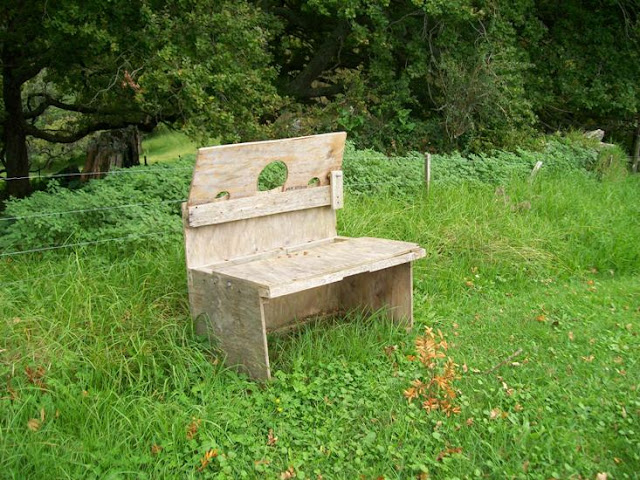I came home two weekends ago now with my friends Bill and Barbara Ellis, cadging a lift with them back from the Bay of Plenty to Auckland. We took the slightly longer-than-usual way home - which is a fantastic thing, especially when I have my camera with me.
Athenree Railway Station was moved to the Athenree reserve on Athenree Road, just off SH2, the Katikati North Road after it closed in 1978 due to the completion of the Kaimai Rail Tunnel (and therefore no more need to that rail line, or its infrastructure). Sometime later, it was moved to this site. The station building dates from 1919, but it has one of the older Victorian-era designs.
From the rear, you see it needs some TLC. Actually, looking closer at the main attraction on the reserve, that patched-up theme isn't solely that of the old station building.
Athenree itself is supposed to date from 1878, according to the sun-faded blurb on the community notice board at the bottom of the drive by the station. Hugh Stewart, brother to George Vesey Stewart, arrived in the colony in that year as part of his brother's Ulster Settlement scheme which led to Katikati being today billed as the world's "only planned Irish settlement".
Stewart's ardent visionary nature and his ambition led him to plan a settlement of Ulster gentry and tenant farmers, of which he would be patriarchal head, but he wished the farmers to become landowners, and therefore insisted that all should possess some money. In his ideas and rashness he resembled Edward Gibbon Wakefield. Without waiting for New Zealand approval of his plan, he invited members of Orange Lodges in Ulster to join him. Negotiations were long and difficult. After an extensive tour of New Zealand he chose as a site for settlement the Katikati Block, on the shores of Tauranga Harbour. He arranged with the Government for settlers in his first party to receive grants of land on conditions of occupation and improvement. This party, of 28 families, arrived by sailing ship in 1875. The second party, 378 in number, followed in 1878. For them Stewart bought land from the Government and sold it in farm lots. Stewart purposely included a large element of the governing and professional classes in Ireland. This “Ulster plantation,” says A. J. Gray, contributed “an atmosphere of culture and refinement that is seldom found in pioneering settlements”.
Encyclopedia of New Zealand, 1966
Hugh and Adela Stewart were balloted a block of land at Katikati they called "Athenree", and built their homestead out of kauri timber shipped down from Auckland. Until it was sold in 1906, this was said to have been a real community hub. There were numerous owners over the ensuing years in the 20th century.
And, sadly, it fell into disrepair. Although the Athenree Homestead Trust since 1991 have done a wonderful job so far, there's still much to be done. View below from the rear of the homestead.
Above, these are "after" and "before" views of the homestead (from the community notice board info). You can see what the trust members were up against!
There are some lovely touches to this reserve. I'd love a wee shed like this in my backyard.
A heritage-style set of loos.
Oh, yes -- a replica barrow, full of impatiens? Something like that in the front garden, I'd love it.
But if you're naughty here -- there's always the stocks.













I just love seeing that people are putting time and effort even if now and again when time and money affords, in to restoring these worthwhile buildings. Love that barrow also!
ReplyDeleteCheers and thanks for the post
Sandy
Cheers, Sandy. :-)
ReplyDelete